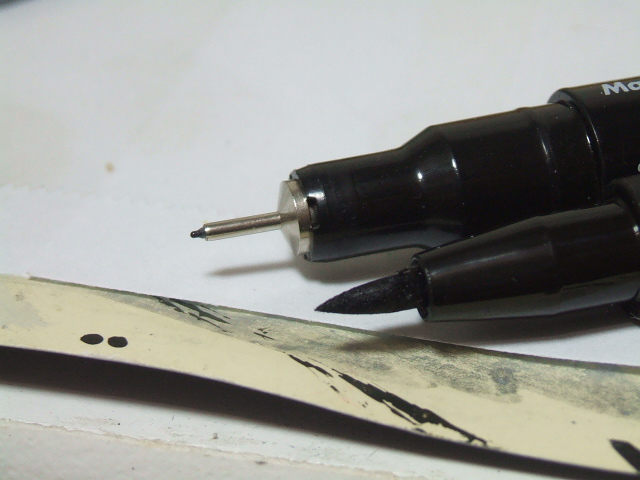
Top Dozen Non-toxics
It’s time to get back the serious business of freeing Joe Modelbuilder from his dependence on poisons. I admit, right up front, that I use toxic materials. I use super glue and rather nasty-smelling Tamiya paints and I’m fully aware that they are not utterly safe–especially that super-toxic cyanoacrylate accelerator which would probably kill you instantly if you drank it.
But so what?
Here are the top products I use that are, in fact, reasonably non-toxic. Not safe to drink–no–but “safer” that spraying “lacquer thinner” through an airbrush. Much safer.
1. Future
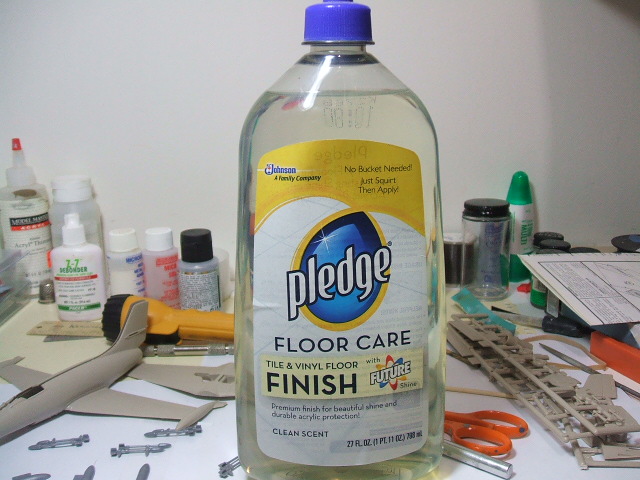
I’d dog sled this stuff over the Chilkoot pass if I had to to get it. It’s fundamental to my style of model building. Accept no substitutes. If you can’t run down to Walmart and buy it in a bottle, then get it on eBay and stop complaining. Just do it.
Future is used to put down a gloss finish, to apply decals onto. It is mixed with Tamiya flat base to provide an absolutely dead-flat flat coat. Yes, using it requires more technical skill than that possessed by one of those adorable woodland animals who actually turn out to be filthy, stinking monsters in person (Koala, Bush Baby, Panda, etc.) but you have that, right? Right?
It can also be used as an adhesive for clear parts, a “clarifier” for those same parts, a decal fixing agent (can be tricky!) and, mixing with food coloring, can be a wash or a way to tint canopies or windshields.
It cannot be beat. If I couldn’t get it and ran out, I’d seriously consider giving up the hobby. I’m serious.
2. Testor’s Model Master Acryl
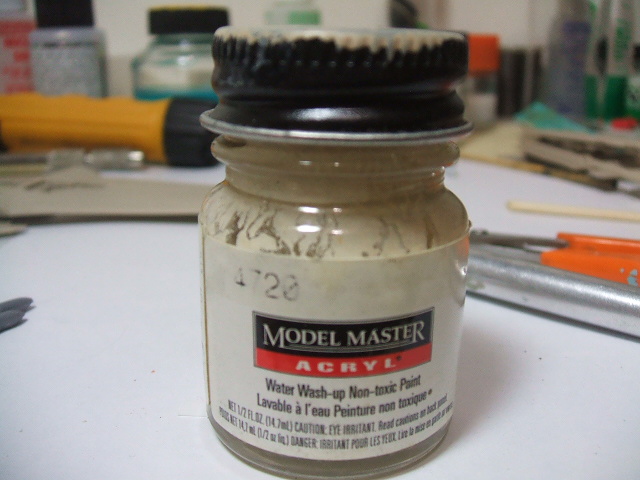
This is excellent paint for brushing. If you put down a nice wet coat, you end up with a finish that is rock hard with no brush marks. You can apply two or three coats to get good coverage. Thins with distilled water. Has a very slight ammonia smell. Should be stirred, not shaken.
This is what I use because it’s available to me. This is my first choice for a painting job.
3. Vallejo Metal Color
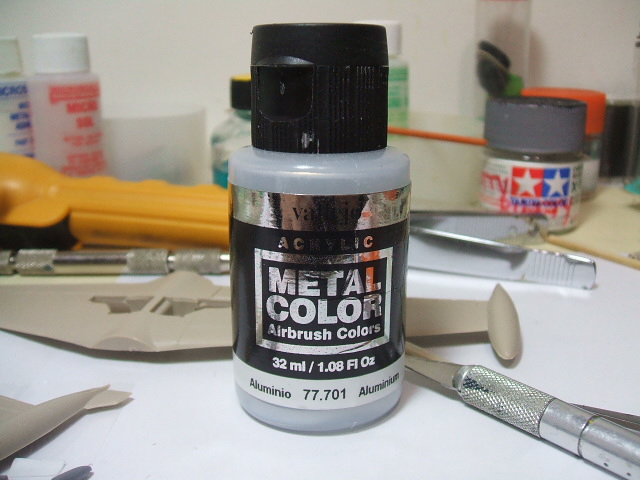
In general, I don’t like Vallejo paint, but some of their products are quite good. Some of them are so good I want to move to a country where man-paint love is understood and not condemned by ignorant people.
Metal Color solves the metal finish problem. I can brush this stuff on, create no smell, and it dries into something that looks like aluminum. It’s a miracle.
4. Microscale Micro Weld
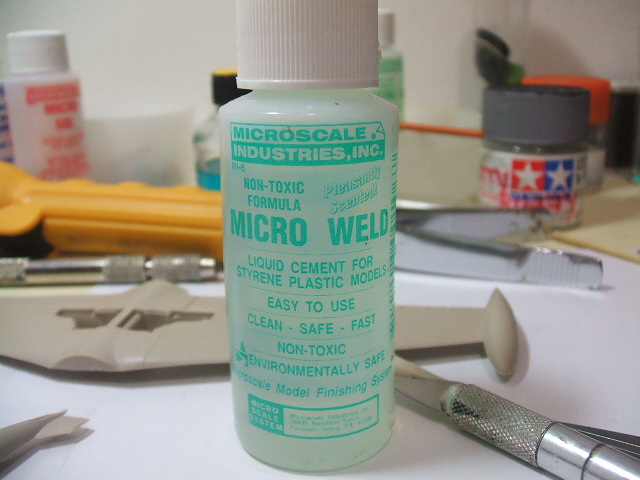
This is important. If I used Tamiya Extra Thin highly toxic glue I’d be a bigger hypocrite than I am. Fortunately for my pant size, I use this stuff. It smells like oranges. I brush it on using one of those awful Humbrol brushes. It works very well on plastic, but you have to learn how to use it, and not give up in five minutes. By the way, here’s some trivia–did you know that inhaling toxic chemical fumes often leads to impatience as the first symptom of neurological decline?
True story.
5. Tombo Multi Glue
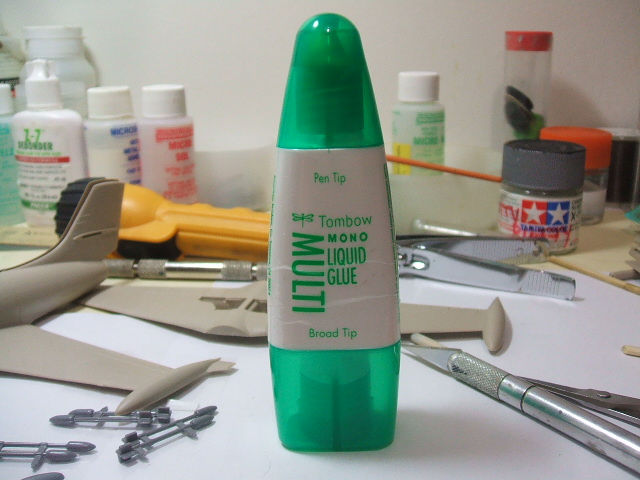
This weirdo glue seemed like it wouldn’t be nearly as useful as it is. The thing about it is that it remains sticky after it dries. This seems more like a problem than a solution–but it’s surprising how often a glue like that is handy when building a model. It’s the “attach and reattach” feature that is useful to me. Your mileage may vary.
6. Vallejo Plastic Putty

Vallejo just keeps on producing stuff that I like, despite my lack of affection for their hobby paints in general. This putty has no smell. Unlike Squadron Green Putty or 3M glazing putty, it does not smell like hazardous toxic chemicals. There is a reason those kinds of products give you “high” if you break federal law and huff them. They are killing your brain. Yes they are. Don’t argue with me. Okay, smarty pants. Don’t come to me later and say I didn’t warn you and so your damage was brained.
I put the Vallejo Putty in a Tamiya paint jar because Vallejo’s packaging (it now comes in a tube) is terrible.
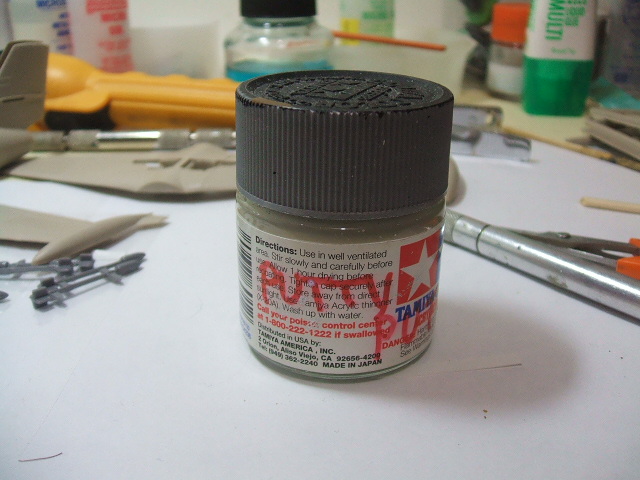
You thin it with water. Keep in mind that if you are a “slap it together, then smear it with putty, then carve it to shape” modeler then this product will not work for you. I wish you all the luck in the world with your endeavors, but wouldn’t it be easier to just carve the thing out of wood or expanded foam? Why pretend to use a kit when you’re going to end up carving it to shape anyway?
Just a question.
Vallejo Plastic Putty is for filling tiny gaps that could be filled with PVA glue or correction fluid. This stuff just works better for me. But I do not do a lot of “putty and sand.”
7. Testors Clear Parts Cement
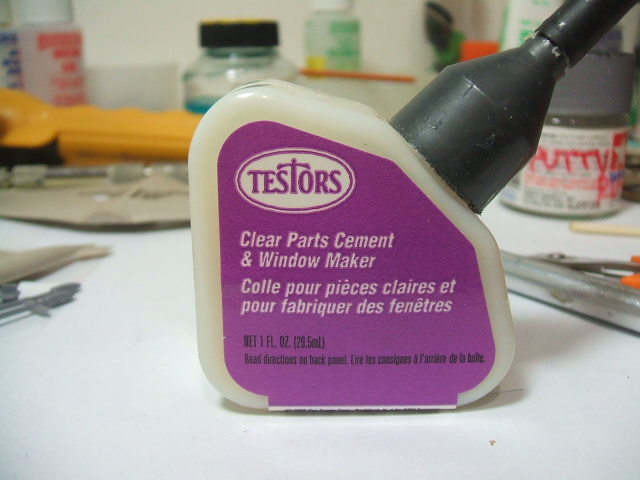
I find that this “canopy glue” from Testors (is it “Testor’s” or “Testors”???) works very well for canopies. I get into trouble when I try anything else. It’s best to stick with a winner. It also works well for gluing thread to vac-formed sails in plastic sailing ship models. It’s not “just white glue.” It doesn’t even look like PVA glue.
8. Food Coloring
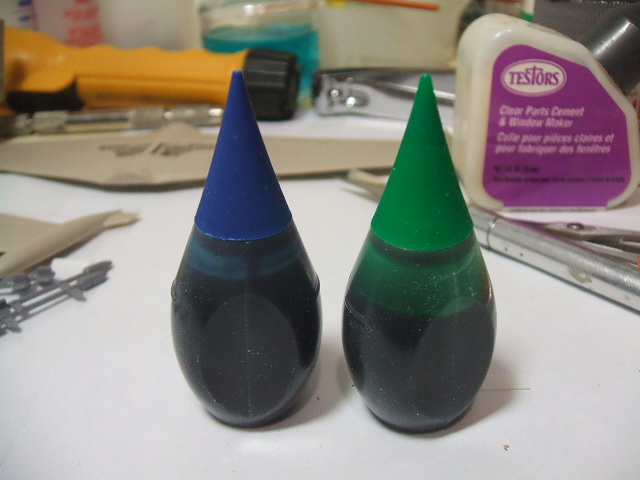
No, these are no happy gnomes. They are silly bottles of food color. This stuff, when mixed with Future, can provide a wash that works as well, if not better, than anything cooked up with oil paints or tempura or whatever. This is beautiful. You can also “tint” Future to make tinted canopies, wing tip lights, radar screens, visors, sunglasses on large figures or anything you can think of. It works well and it’s super cheap. Be warned: I do not use panel line washes. I use pencils to highlight panel lines, and ground charcoal or pastels to create shading. But–I’m sure that a determined person could use Future plus food color to do these things. I just don’t.
9. Tamiya Flat Base
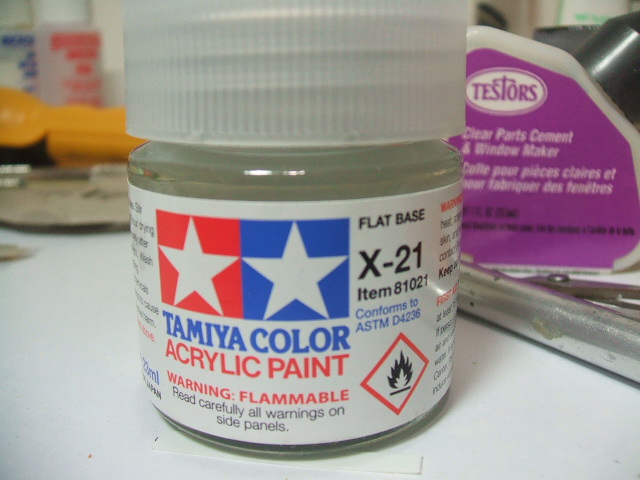
This stuff is one of those products that stumps youngsters. “Well…whadaya DO with it?” You mix it into glossy stuff to make it flat. That’s what you do. There is a chance it may dry with a “frost.” I’m peeved at the nasty remarks I’ve read in which the individual in question acts like I guaranteed perfect results and I did this deliberately as a practical joke.
That’s right. I get my jollies telling people to use products that ruin their models.
For the non-paranoid, using this product requires that you experiment and try it out first. Don’t assume. Mix and test. If your idea of a fun modeling (or modelling) evening is to pull up the tea tray in front of the television and use products from manufacturers you trust in a predictable way., then don’t use this. Do not use Tamiya Flat Base.
More for me.
10. Golden Molding Paste
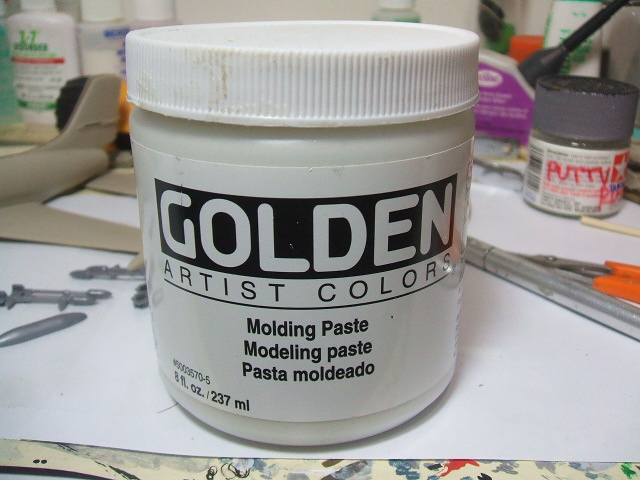
I’m including this as a nod to the future. A glimpse of things to come. This product does not dry rock hard, so it’s useful only in those situations where a seam has to filled and white glue tends to “melt” if you expose it to water (and my paint contains water). So it’s useful in that way. But, I’m going to get some of the “hard molding paste” and try that. It may be more useful as a filler.
No snarky remarks from me on this one. No goof on a forum has attacked me for suggesting it (yet).
11. Artists’ Pens
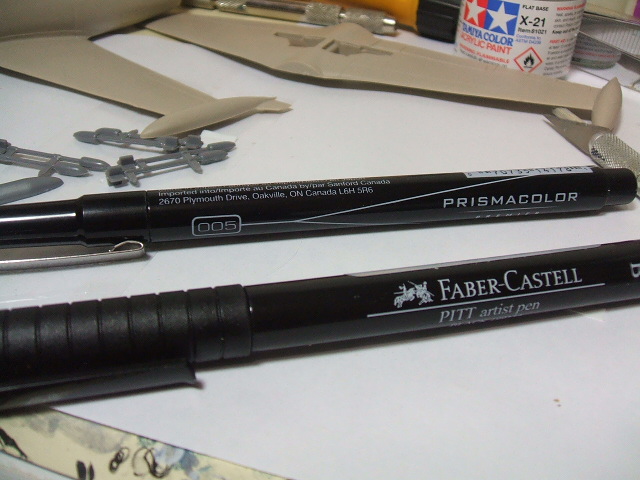
Very fine “felt tip” pens now exists that can provide a very easy, non-toxic way to make something black. The very fine point can be used for panel lines. The broad point works well for darkening tiny hollows–get your mind out of the gutter!

12. Micro Metal Foil Adhesive
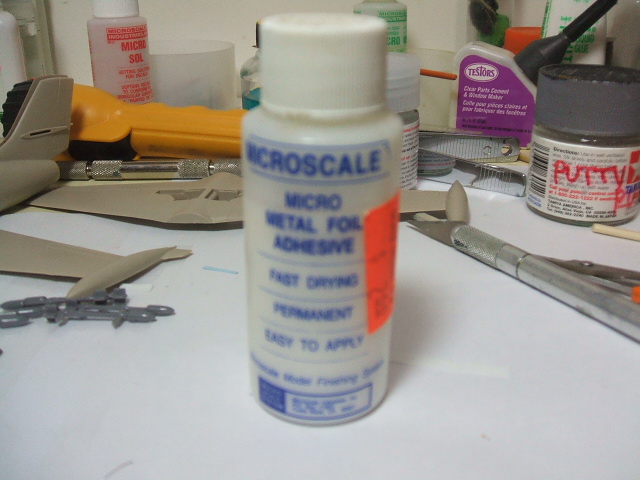
I use this “metal foil adhesive” as a primer for metal parts. It allows the acrylic paints I use to attach to the metal part or metal figure with a bond like iron. I used to use it for applying foil to models, but Vallejo Metal Color put an end to that behavior.
Well, that’s my “top dozen” list of non-toxic products. Some of them are essential to me, others are nice to have. If you can suggest an item that should go on the list, feel free to post a comment.
1. Future
2. Testor’s Model Master Acryl
3. Vallejo Metal Color
4. Microscale Micro Weld
5. Tombo Multi Glue
6. Vallejo Plastic Putty
7. Testors Clear Parts Cement
8. Food Coloring
9. Tamiya Flat Base
10. Golden Molding Paste
11. Artists’ Pens
12. Micro Metal Foil Adhesive
Just off the top of my head…
Testors blue non toxic cement in the metal needle applicator. My weapon of choice. Citrus smell, good bond once dry.
White/pva glue. Good for many applications, and makes wonderful puddles et al for dioramas. Can be mixed with water based paint to create coloured water too.
Pin drill set, for making those tiny holes in gun barrels, etc.
Lead pencils for weathering and drawing patterns, colouring worn metal parts on tank tracks, etc.
A Dremel tool for sculpting plastic parts and doing all sorts of remodelling work, again I tend to use this more on Army/Tank models than other models. Very handy to have around the house too.
If I think of anything else non toxic I use, I will add it in. I still use a few naughty toxic things but it is your blog after all 🙂